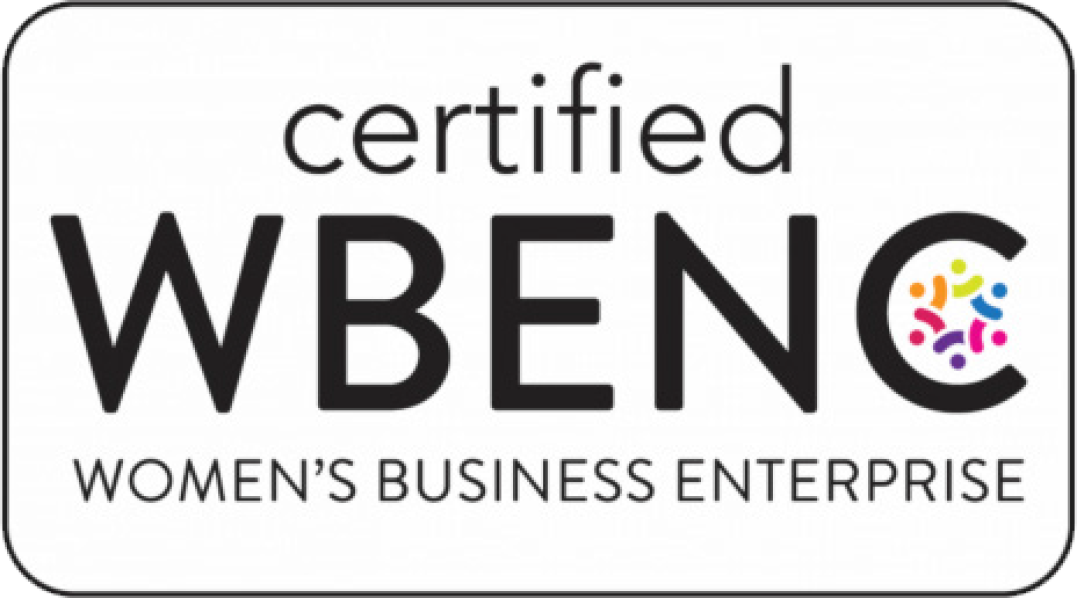You know that the company you work for is interesting. You know your team is interesting. But somehow, your job postings read like you made a photocopy of a piece of white bread.
They’re bland. They’re colorless. They’re uninspiring. They’re…boring.
Contrary to popular belief, job descriptions (or JDs, in corporate speak) don’t have to sound like this. In fact, they can be bright, engaging and original. All it takes is a little creative thinking.
And it’s not as hard as it sounds. Here’s our step-by-step guide for crafting JDs that will make job candidates say, “OMG I have found my people.”
Admit that you copy/paste information from other job postings you find on LinkedIn
It’s okay. Writing job descriptions can be painful. But now that we’ve gotten this step out of the way, we can make real progress.
Write like a human
People trust people, not companies. When you sound like a real human in your job postings, you increase your chances of connecting with your candidate.
For example. You could change this…
“We’re searching for a motivated, results-oriented individual to join our team.”
to this…
“We’re looking for someone who gets excited about the work they do. Because we do, too.”
Voila! Instead of sounding like a robot in a tie, you sound like a human. And people prefer working for humans – because we get us, ya know?
Put the good stuff first
At WordsFresh, we call this the hook. Your posting should start off strong with words that grab your audience’s attention. Now is not the time to use the boilerplate language from your latest press release, because chances are your candidate doesn’t care that your company has been “dedicated to improving customer outcomes since 1956.”
What they do care about is stuff that applies to them, like…
- Your company’s culture
- Your benefits, like your flexible work-from-home policy
- And, yes, a high-level overview of what they’ll be doing, but in real talk. Not jargon.
An easy way to do this is to ask yourself this question: “If I didn’t work here, would I care about this fact?” If the answer is no, delete it.
Don’t list every. single. tiny. detail.
Everyone knows about the itty-bitty font at the bottom of every job description that reads, “…and other responsibilities as required.” Writing a vague statement like that may make job candidates wonder what you’re hiding, but going into too much detail may make you sound like a demanding corporate overlord. And that, as they say, is not a good look.
The key to listing actual responsibilities of the role is balance and, once again, talking like a human.
Wouldn’t you rather read this…
“You’ll write internal and external communications designed to engage our audiences and tout our brand.”
…instead of this?
“You’ll write newsletters, emails, speeches, blog posts, social media posts, brochures, flyers, postcards, and other materials that effectively connect with our audiences and improve sales outcomes.”
Sometimes, less really is more. Especially when you’re posting to a social channel like LinkedIn, where you’re competing with dozens of other companies for the same talent.
And, if the role requires experience, the right candidate will know exactly what you mean without the laundry list.
Be careful what you promise
Yes, you absolutely should talk about what makes your company great. But keep in mind that candidates can smell fake through their computer screens. If your posting makes wild claims, like how a position at your company will literally change their life, you may get more eye-rolls than click-throughs.
Instead, be positive, but be honest. A healthy work/life balance may not seem like something that’s worth a specific shout-out, but trust us, it is. Conversely, if your company is one that doesn’t value work/life balance — because we know there are still some out there — don’t say that you do.
Don’t use the same words as everyone else
Is your culture compassionate? Can people who work for you make a difference? Great! You made the list alongside roughly a million other companies with open positions on LinkedIn.
First, reread Step 1 above. Then, switch up your word choice to catch the attention of your potential candidates.
Instead of…
“We’re proud of our compassionate culture.”
Try…
“We care about each other here. That’s why we offer three weeks paid vacation and a policy that allows you to work from wherever you find inspiration.”
Stop asking for the impossible
If your job posting includes qualifications like, “An encyclopedic knowledge of all social media platforms and current strategies for increasing reach,” you may want to consider tweaking them. Phrases like “encyclopedic knowledge” may scare away even the most qualified candidates — that’s a lot to live up to, even for someone with 20 years of experience. We’d change that expectation to the following:
“Has a strong understanding of social media and a willingness to learn about emerging platforms, and can execute strategies that help us enhance our presence and grow our fan base.”
Phew. That’s a lot less intimidating.
You can do it!
Your ideal candidate is out there, doom-scrolling job postings and becoming more and more depressed with every cookie-cutter description they read. With these tips in hand, however, your posting can be the one that causes them to pause, eyes wide, and say, “Hey! That sounds like me!”
Want more writing tips, tricks and advice? Sign up below for Three Fresh Ideas and a Meme!
You know that the company you work for is interesting. You know your team is interesting. But somehow, your job postings read like you made a photocopy of a piece of white bread.
They’re bland. They’re colorless. They’re uninspiring. They’re…boring.
Contrary to popular belief, job descriptions (or JDs, in corporate speak) don’t have to sound like this. In fact, they can be bright, engaging and original. All it takes is a little creative thinking.
And it’s not as hard as it sounds. Here’s our step-by-step guide for crafting JDs that will make job candidates say, “OMG I have found my people.”
Admit that you copy/paste information from other job postings you find on LinkedIn
It’s okay. Writing job descriptions can be painful. But now that we’ve gotten this step out of the way, we can make real progress.
Write like a human
People trust people, not companies. When you sound like a real human in your job postings, you increase your chances of connecting with your candidate.
For example. You could change this…
“We’re searching for a motivated, results-oriented individual to join our team.”
to this…
“We’re looking for someone who gets excited about the work they do. Because we do, too.”
Voila! Instead of sounding like a robot in a tie, you sound like a human. And people prefer working for humans – because we get us, ya know?
Put the good stuff first
At WordsFresh, we call this the hook. Your posting should start off strong with words that grab your audience’s attention. Now is not the time to use the boilerplate language from your latest press release, because chances are your candidate doesn’t care that your company has been “dedicated to improving customer outcomes since 1956.”
What they do care about is stuff that applies to them, like…
- Your company’s culture
- Your benefits, like your flexible work-from-home policy
- And, yes, a high-level overview of what they’ll be doing, but in real talk. Not jargon.
An easy way to do this is to ask yourself this question: “If I didn’t work here, would I care about this fact?” If the answer is no, delete it.
Don’t list every. single. tiny. detail.
Everyone knows about the itty-bitty font at the bottom of every job description that reads, “…and other responsibilities as required.” Writing a vague statement like that may make job candidates wonder what you’re hiding, but going into too much detail may make you sound like a demanding corporate overlord. And that, as they say, is not a good look.
The key to listing actual responsibilities of the role is balance and, once again, talking like a human.
Wouldn’t you rather read this…
“You’ll write internal and external communications designed to engage our audiences and tout our brand.”
…instead of this?
“You’ll write newsletters, emails, speeches, blog posts, social media posts, brochures, flyers, postcards, and other materials that effectively connect with our audiences and improve sales outcomes.”
Sometimes, less really is more. Especially when you’re posting to a social channel like LinkedIn, where you’re competing with dozens of other companies for the same talent.
And, if the role requires experience, the right candidate will know exactly what you mean without the laundry list.
Be careful what you promise
Yes, you absolutely should talk about what makes your company great. But keep in mind that candidates can smell fake through their computer screens. If your posting makes wild claims, like how a position at your company will literally change their life, you may get more eye-rolls than click-throughs.
Instead, be positive, but be honest. A healthy work/life balance may not seem like something that’s worth a specific shout-out, but trust us, it is. Conversely, if your company is one that doesn’t value work/life balance — because we know there are still some out there — don’t say that you do.
Don’t use the same words as everyone else
Is your culture compassionate? Can people who work for you make a difference? Great! You made the list alongside roughly a million other companies with open positions on LinkedIn.
First, reread Step 1 above. Then, switch up your word choice to catch the attention of your potential candidates.
Instead of…
“We’re proud of our compassionate culture.”
Try…
“We care about each other here. That’s why we offer three weeks paid vacation and a policy that allows you to work from wherever you find inspiration.”
Stop asking for the impossible
If your job posting includes qualifications like, “An encyclopedic knowledge of all social media platforms and current strategies for increasing reach,” you may want to consider tweaking them. Phrases like “encyclopedic knowledge” may scare away even the most qualified candidates — that’s a lot to live up to, even for someone with 20 years of experience. We’d change that expectation to the following:
“Has a strong understanding of social media and a willingness to learn about emerging platforms, and can execute strategies that help us enhance our presence and grow our fan base.”
Phew. That’s a lot less intimidating.
You can do it!
Your ideal candidate is out there, doom-scrolling job postings and becoming more and more depressed with every cookie-cutter description they read. With these tips in hand, however, your posting can be the one that causes them to pause, eyes wide, and say, “Hey! That sounds like me!”
Want more writing tips, tricks and advice? Sign up below for Three Fresh Ideas and a Meme!
 SUBSCRIBE TO
SUBSCRIBE TO
Three fresh ideas (and a meme)
Our monthly take on today’s marketing and communications topics… and a little fun, too.


